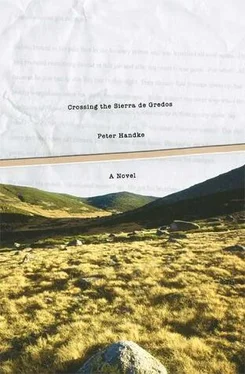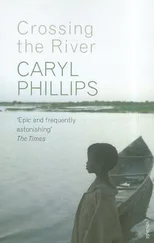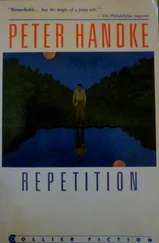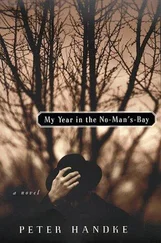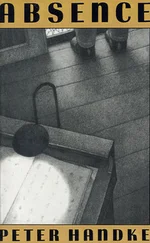But unlike what had happened during her first time in the Sierra, this time one experienced such reversals as part of a game involving the terrain or region, the result of the particular sequence and rhythm in which one experienced this mountainous area as one walked, climbed, descended, and ascended again, and this time the constant transformation of earth-low into sky-high did not produce dread (yes, dread, horror) but contentment, not unlike that of children tumbling and rolling over hummocks — a sense of lightheartedness and levity at finding that for once “heaven” was “hell” and “hell” was now “heaven.”
And likewise, when we turned toward our destination, the crest, we saw it, along with the still merely imaginary Candeleda Pass, not at the level of our brow or crown, but sunken, hardly reaching our beltline, as if the shelf where we had paused were already the main ridge up above.
And here between our feet and the crest of the Sierra (hardly a stone’s throw and birds’ or electric pylons’ swoop away?), over there where the mountain range actually should have presented a landscape of peaks, reaching for outer space: a gigantic hollow, hemmed in to the west and the east, toward sunrise and sunset, by the steep cliffs of the “summit plain,” which formed a fragmentary half-circle around the hollow; hollow? more like an area of collapse or a depression, and all this up sky-high, with the bottom of this depression having the appearance of a mammoth arena.
And although it was not her first time here, she did not recognize this arena. The dark spot at the bottom was a forest, if only a small one, and it had not been there earlier. But the pool at the bottom of the depression — or was it a lake, if only a very small one? — was not new to her; it was the Laguna Grande de Gredos, a lake! Except that its water was not even frozen, and had clouds drifting over it, of frost? smoke? haze?
Familiar to her from before were, likewise, the tumbled boulders, both on the floor of the arena and — even more helter-skelter, fractured, and varied — on the slopes or “tiers” of the natural amphitheater, in which ten times ten theaters the size of the already enormous one at Epidauros would have fit easily. She knew that the entire hell-deep depression there had once been filled to the rim with glacial ice, and that it was the glacier that had left the boulders, towers, and fragments all higgledy-piggledy, leaning against each other, crashed on top of each other, some seemingly standing on their heads (or on their hands, or on only one hand)? Yes, in bygone times, chaos had reigned clear across the Sierra arena, hour after hour, day after day, and for thousands of years, an incessant crashing, smashing, splitting, pounding, with sparks flying. But then, once the ice had melted and was no longer eternal, the chaos had died down. Now it was recalled only on maps, in mountaineering books, in the guide to the “Dangers of the Sierra de Gredos”: “El caos de Hondoneda” (or “Hondareda”), the Chaos of Hondoneda ( hondo , deep); “chaos” was the name used the world over for all the areas formerly chewed up by the glacier — nothing quieter than a “chaos” like this, and even the rock formations that seemed to be resting on only one hand were stable for the duration (the duration?).
But no: the smoke or haze in the depths of Hondoneda or Hondareda, high up in the Sierra, did not emanate, or not exclusively, from the “laguna”—where the glacier had sliced most deeply — but rose from one of the chaos-boulders, no, from several, from all of them.
These were lived in, were human habitations. It was the smoke from fires — wood smoke, root smoke — that we smelled all the way up here. Of course we knew from earlier crossings that down there in Hondareda, the most remote part of the Sierra, lived a hermit. But these people were no hermits anymore: so close together, and also so many crowded into one place. We had already noticed earlier, as we crossed the trackless wastes, in addition to the innumerable footprints, the mussel shells amid the granite, in the sand and in the crevices.
We had even come upon oyster shells, gleaming with mother-of-pearl. And these could not be fossils, could they? There had been no ocean here, had there? And what hermits ate mussels and oysters? Had them delivered up here in the mountains? And the legions of shell-casings on the way up — in every tenth thicket a blue capsule (which one soon stopped mistaking for a glimpse of the sky on the other side)? Hermits who in the meantime were also hunters? Had mutated into hunters? And now also shots, from shotguns, again and again; in the forest down there?
The longer she stood and gazed down into this broad depression, so close to the summit plain (or the “cirque,” circo , as it is called in the area), the more contradictory the image became, less in the sense of off-putting than of attractive: contradictory? erratic, jumpy. Here in the trackless wilderness, to reach the colony below she had to strike out at random, clambering, jumping, also slithering down sandy slopes, then fight her way through, and on the opposite slope, up to the former pass, a real vehicular road in serpentines, this, too, not there on her previous visit to the Sierra, or overlooked. So was the Puerto de Candeleda in use again? even widened as never before, and likewise on the steep southern descent more or less passable, at least with an all-terrain vehicle? But this road leading so straight up to the bare horizon that one involuntarily thought: “Not suitable as an escape route.”
And in the midst of the chaos a helicopter landing pad, not built as such, but already there, a square of quartz and granite polished by the glacier, and a helicopter there just about to take off? no, that was merely the full-sized outline of one, with broad, blazing red stripes, in the middle of the square, intended to mark the destination for pilots heading for the depression. And there was a constant crack of shotguns, and at the same time, as she descended, from far below as well as from the slopes to the right and left of her, people were waving. From all sides dogs came racing toward her for a moment, each of them guarding a herd of sheep, goats, or calves, and they all jumped up on her at the same time and licked her from top to toe.
The shepherds, or whatever they were, who went with the dogs, without exception young and speaking into walkie-talkies, belonged to different and in every case quite mixed races, one with Asian eyes in an American Indian face, another dark-skinned and red-haired, a third with the lips and forehead of an Australian aborigine, but tall and narrow-hipped, the next, a kerchief under her mannish hat, a girl with such a white skin and such black eyes that the two women, when they encountered each other, jumped backward for a moment, and all the young shepherds, not dressed in shepherd style, but positively elegant — which actually seemed even more practical and also appropriate to the circo of glassy, green, gray, blue-tinged rock walls — were intently focused on their work, the result of their not having been at it long — having started only yesterday or this morning. And as they carried out their “shepherdly” duties, they were also engaged in other activities, not only playing musical instruments, above all lutes, oud in Arabic, and steel harmonicas, whose brittle sound went well with the granite, but also juggling, walking on their hands, turning cartwheels on the edge of precipices, as if indeed practicing to perform in a circus, but also following the lines of a book with their fingers, rubbing flints together, tasting the mountain fruits, and many more such things.
How transformed these faces seemed, too, faces one might have encountered on a grand boulevard in Madrid or Rome, in the light of the high Sierra, in the broad-spectrum reflection that deepened and clarified the colors and lines of individual details, which the granite gallery encircling all of Hondareda, as well as the flat ledge underfoot, emitted; a light and refraction that showed the features of the faces not as isolated details, as mouth, nose, ears, but all in one.
Читать дальше
